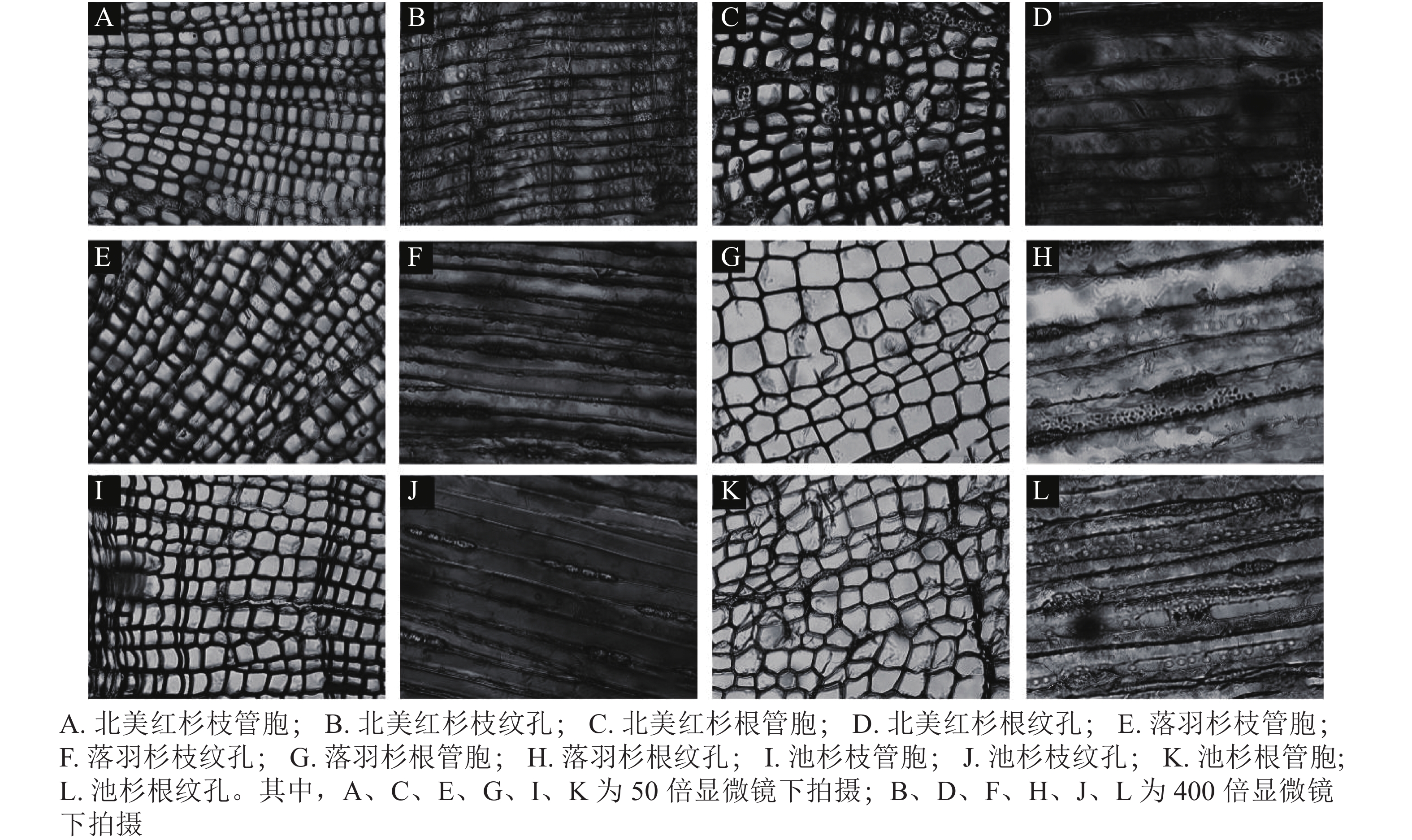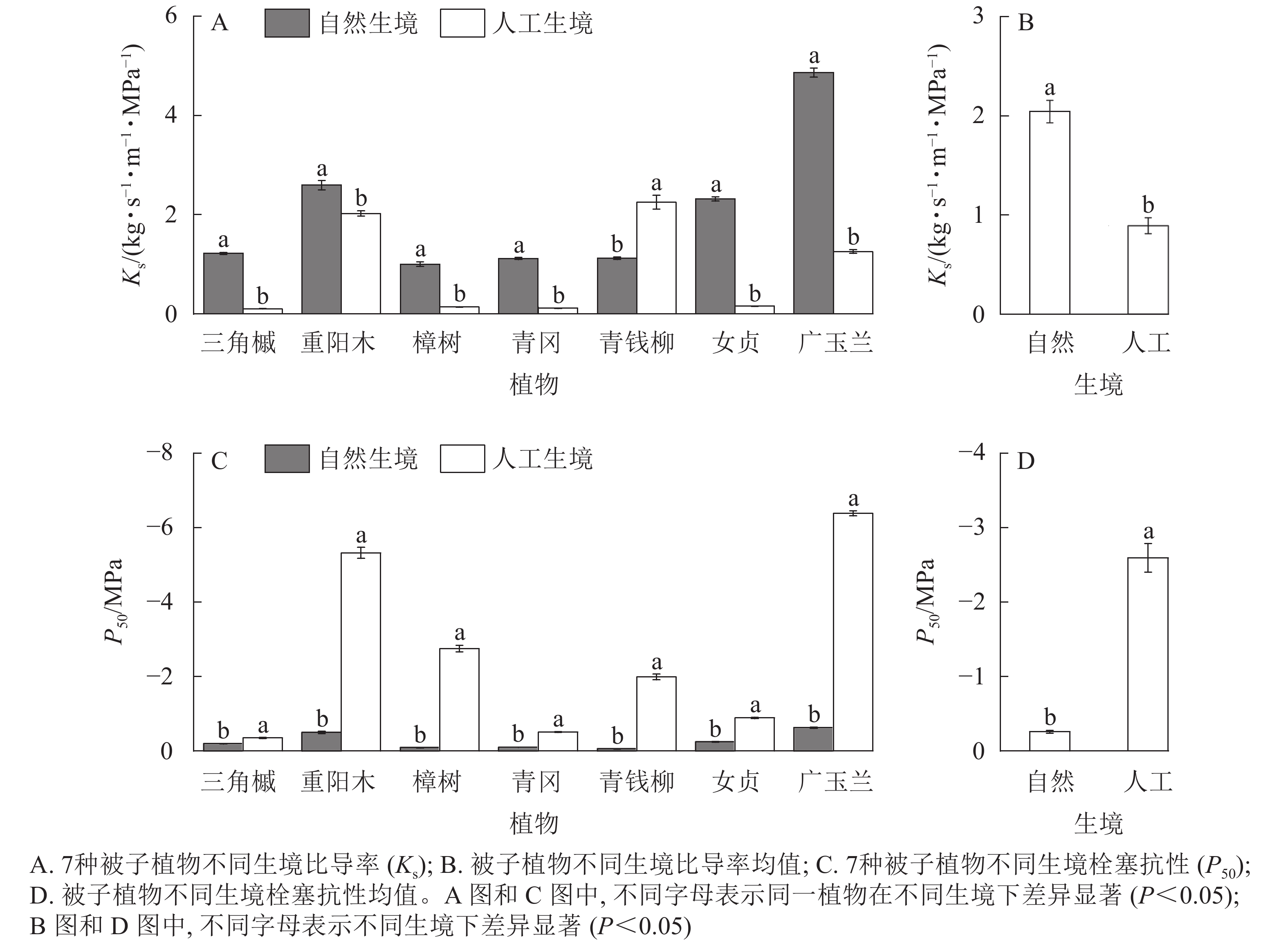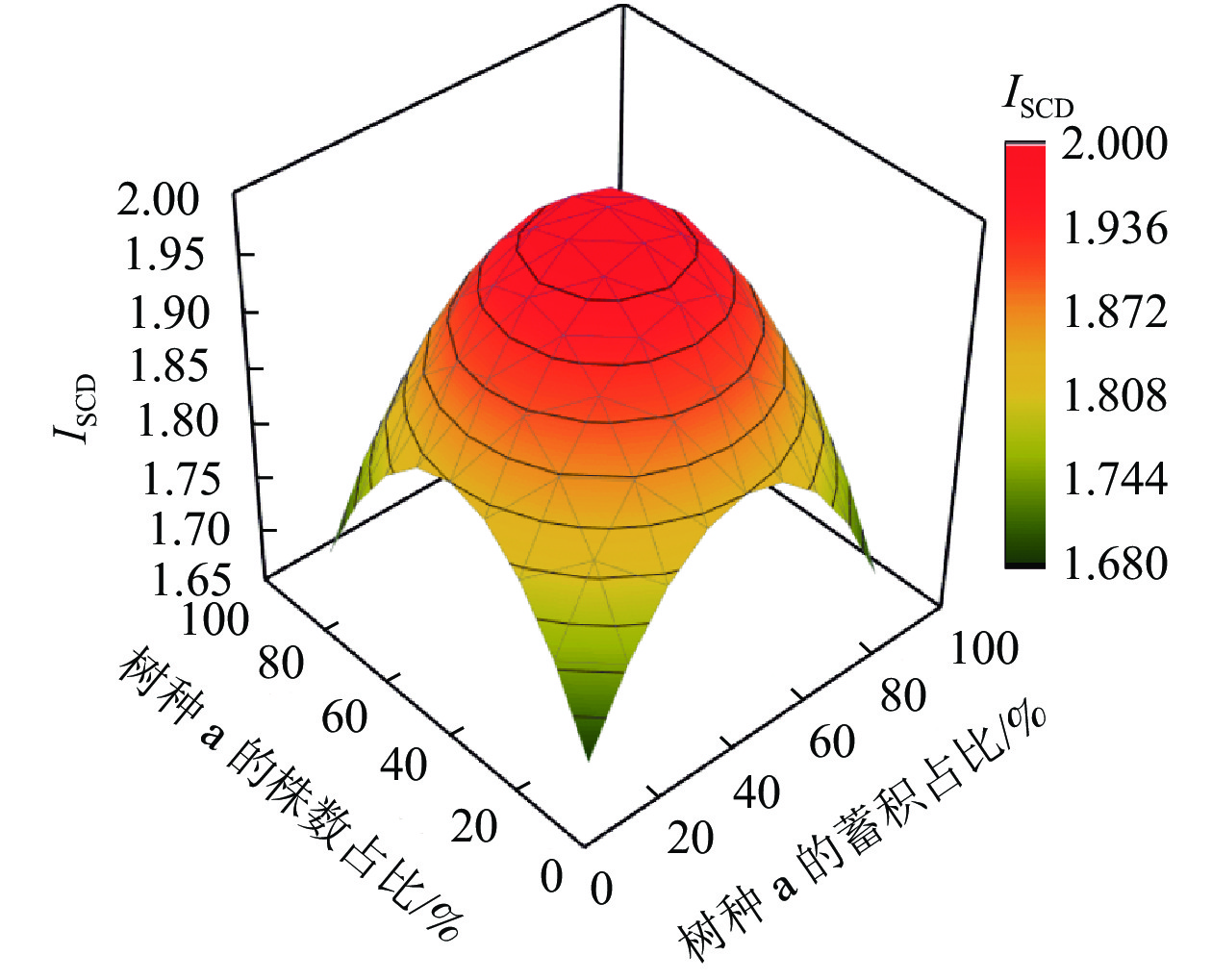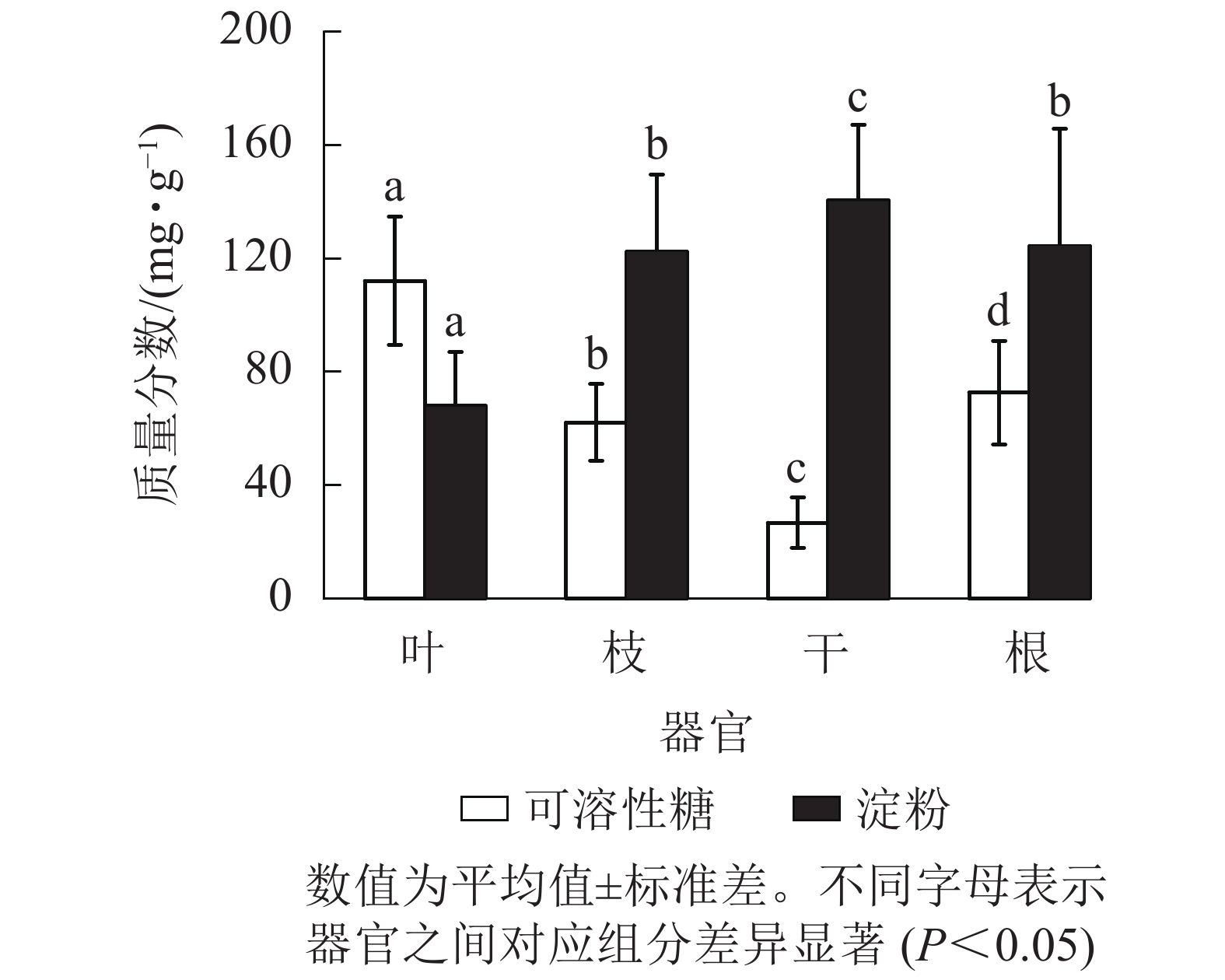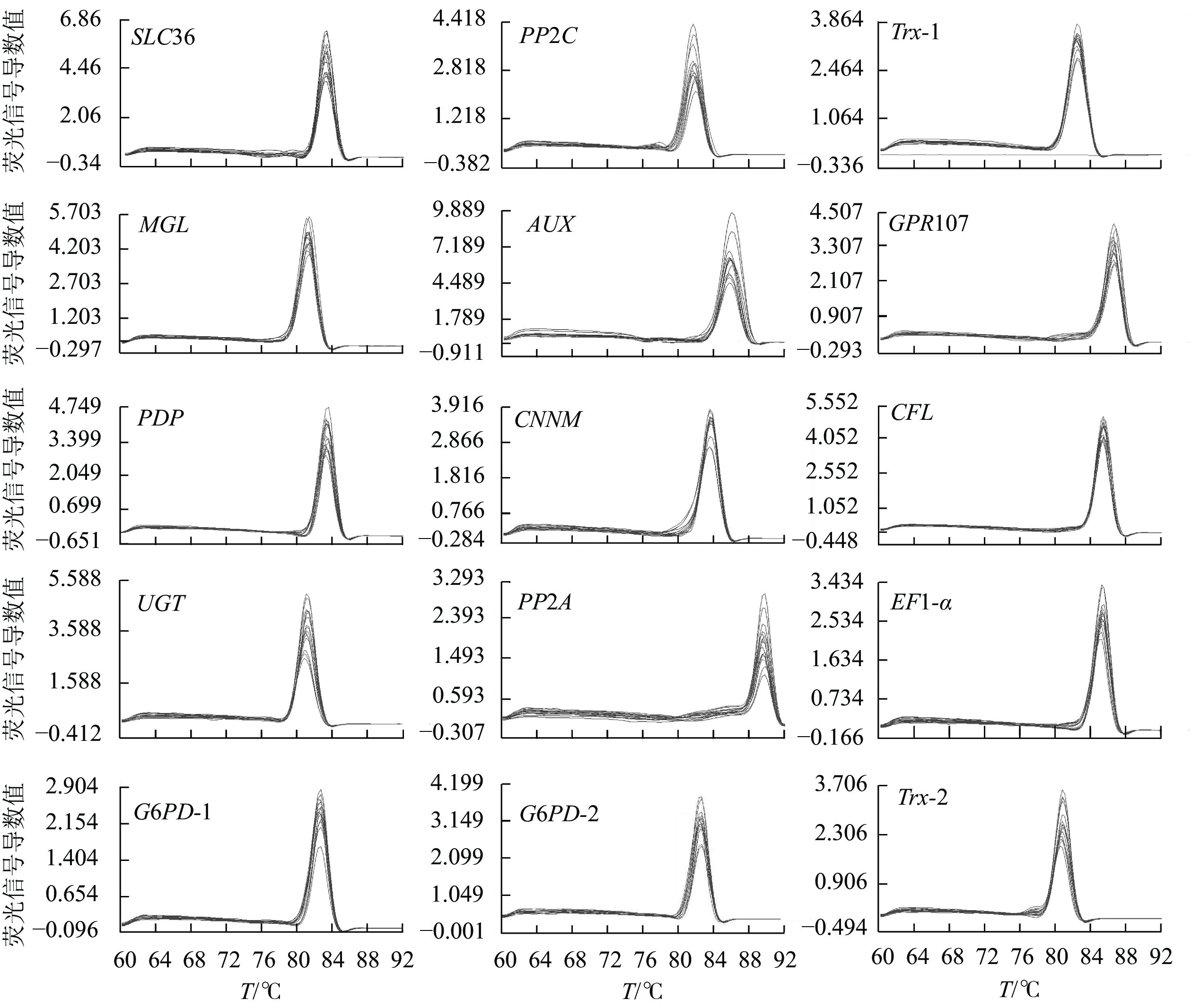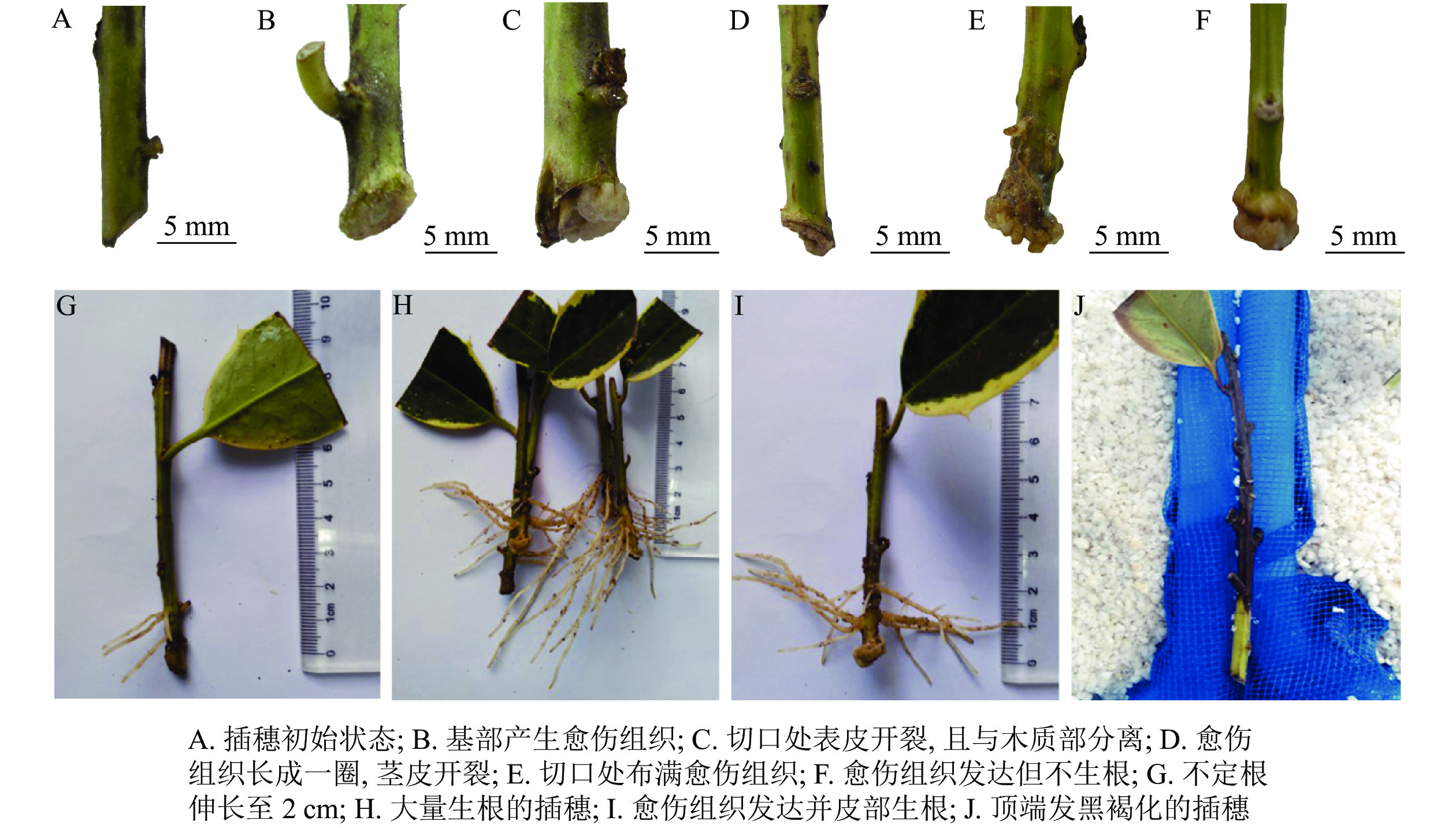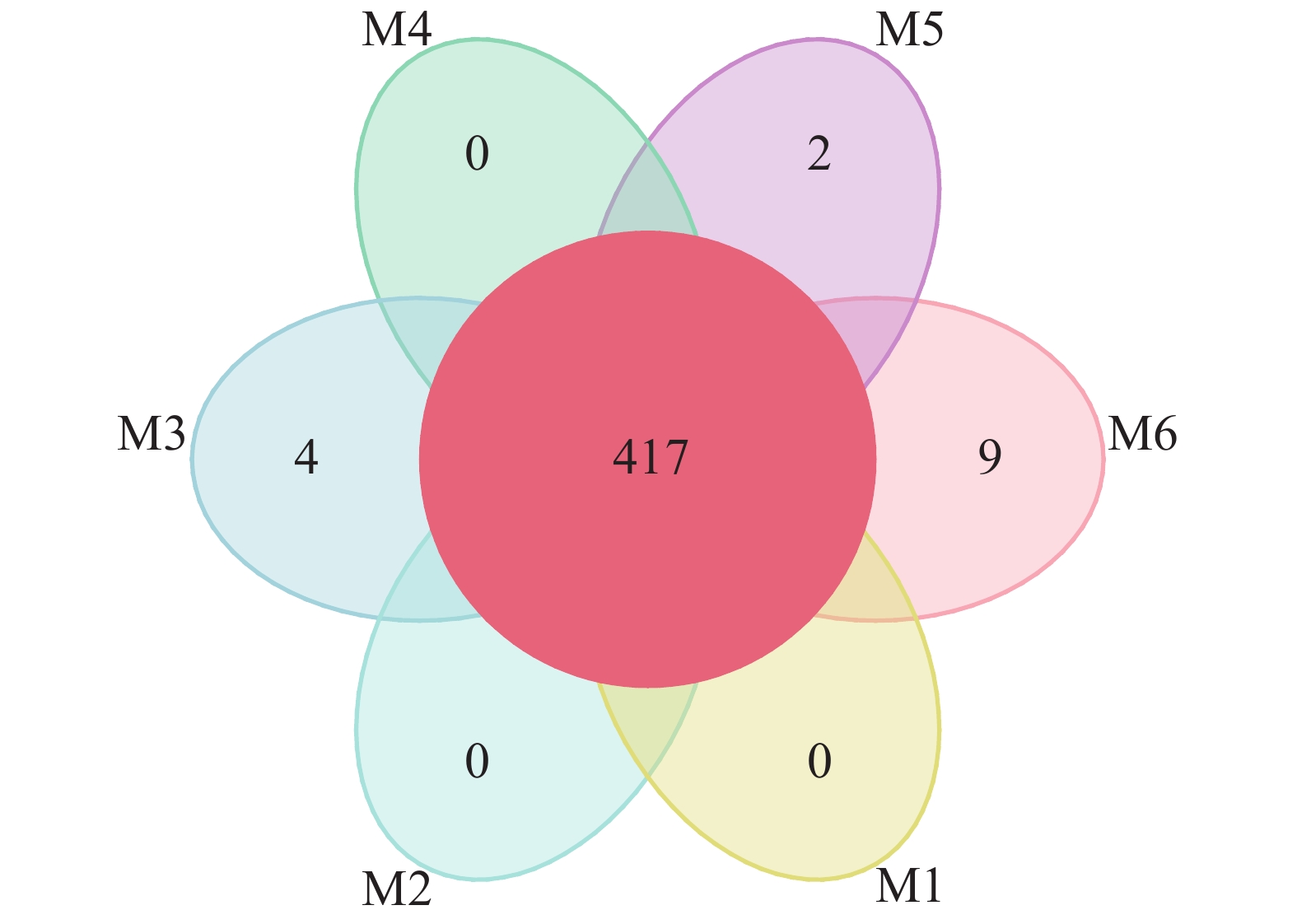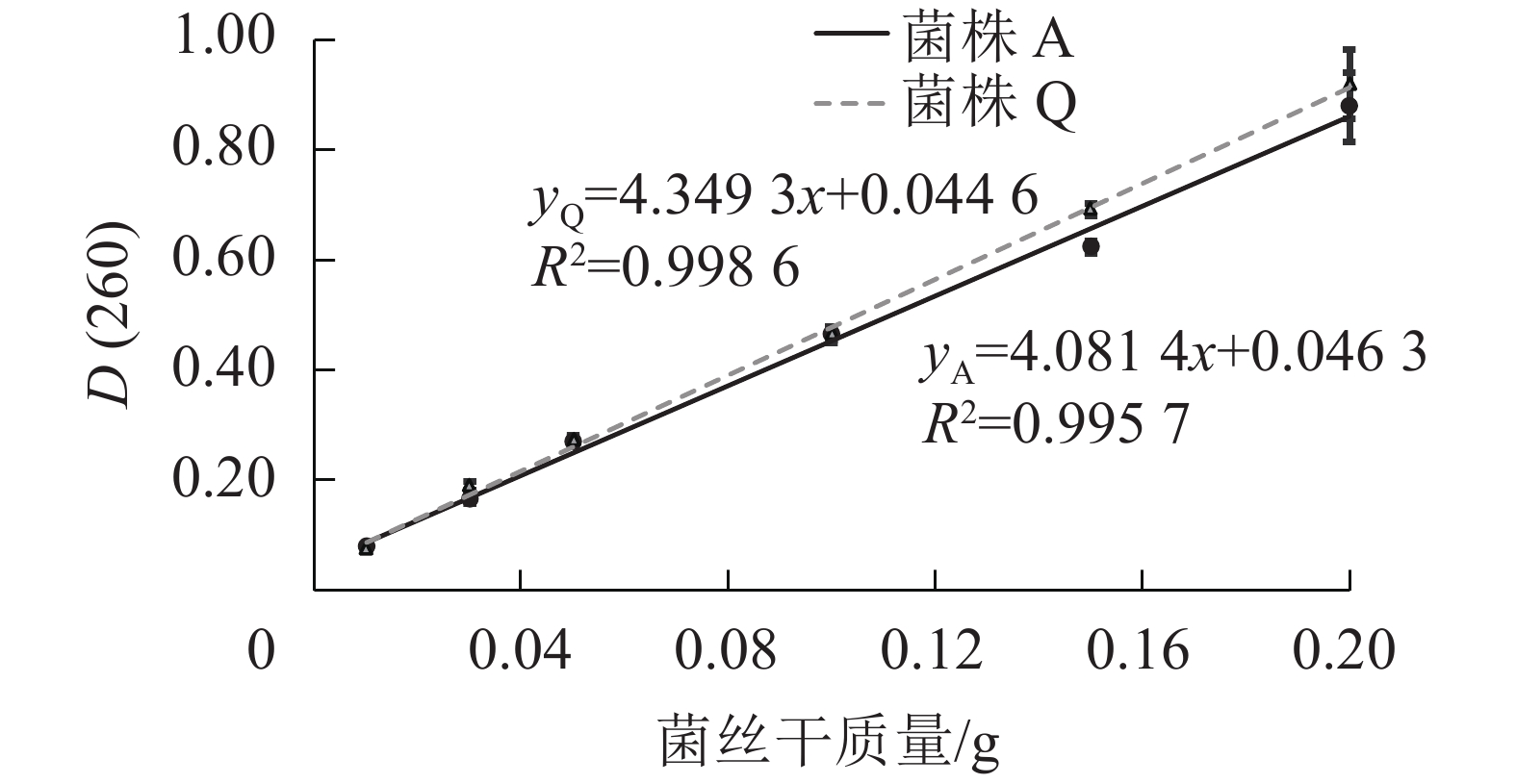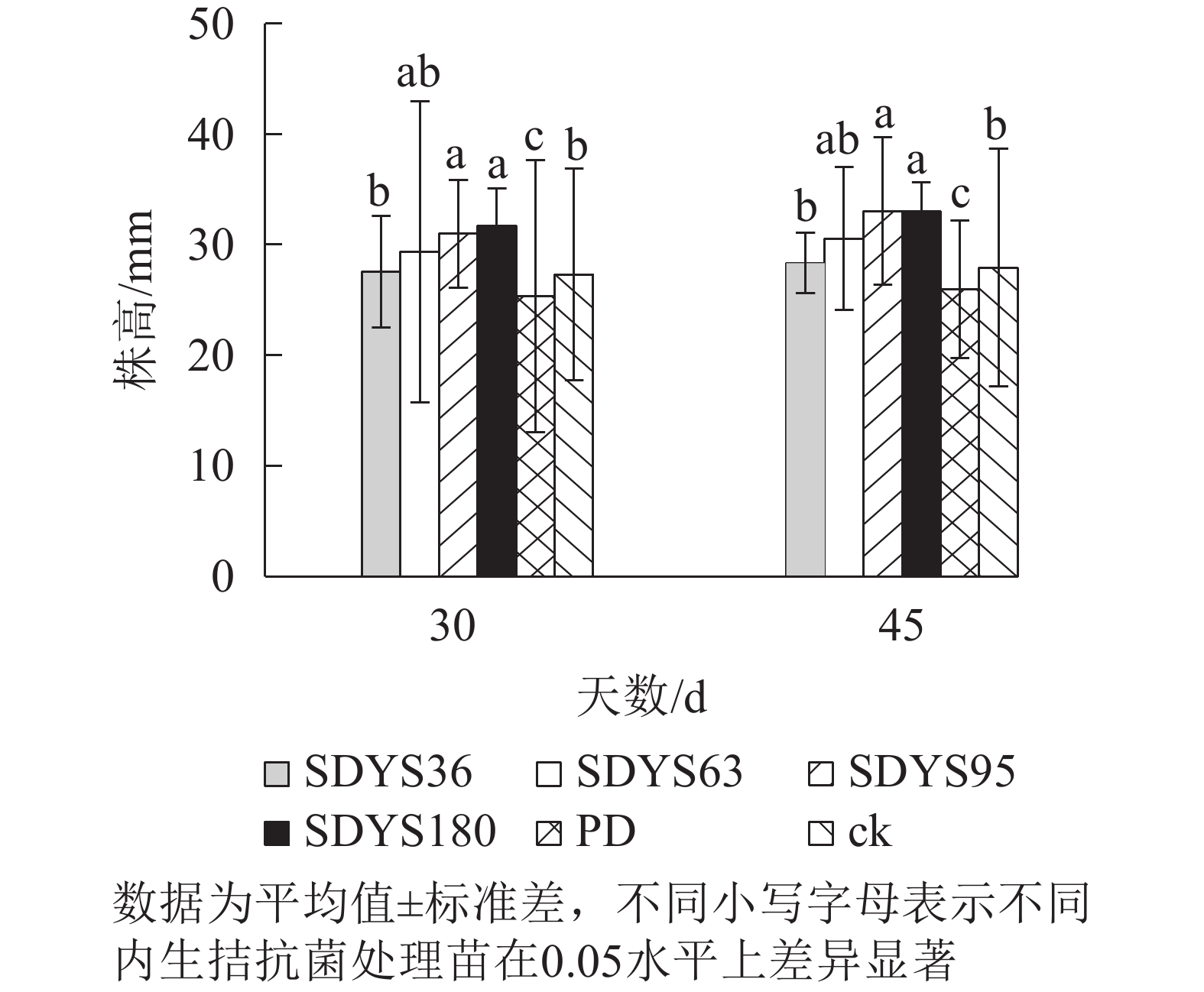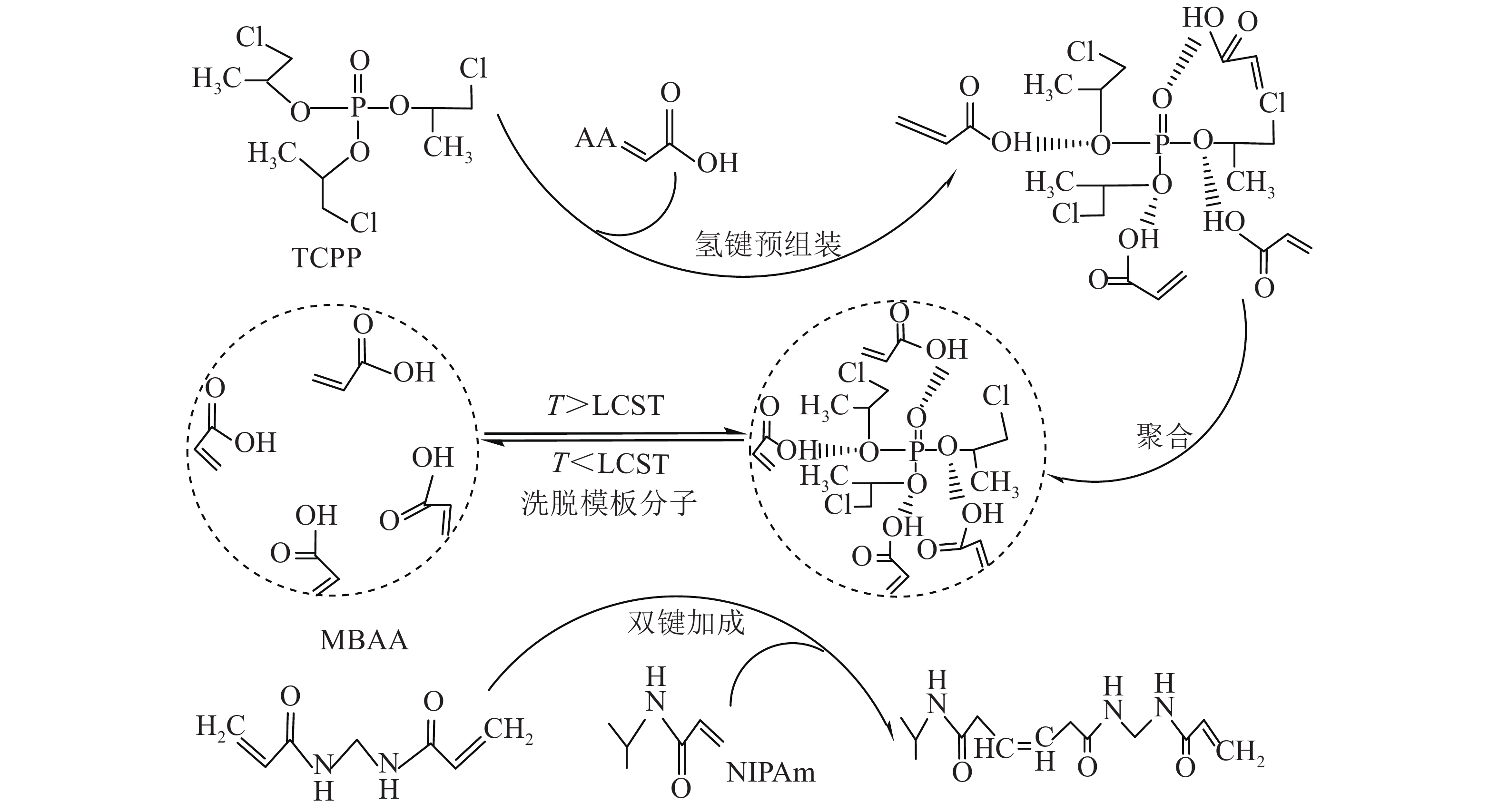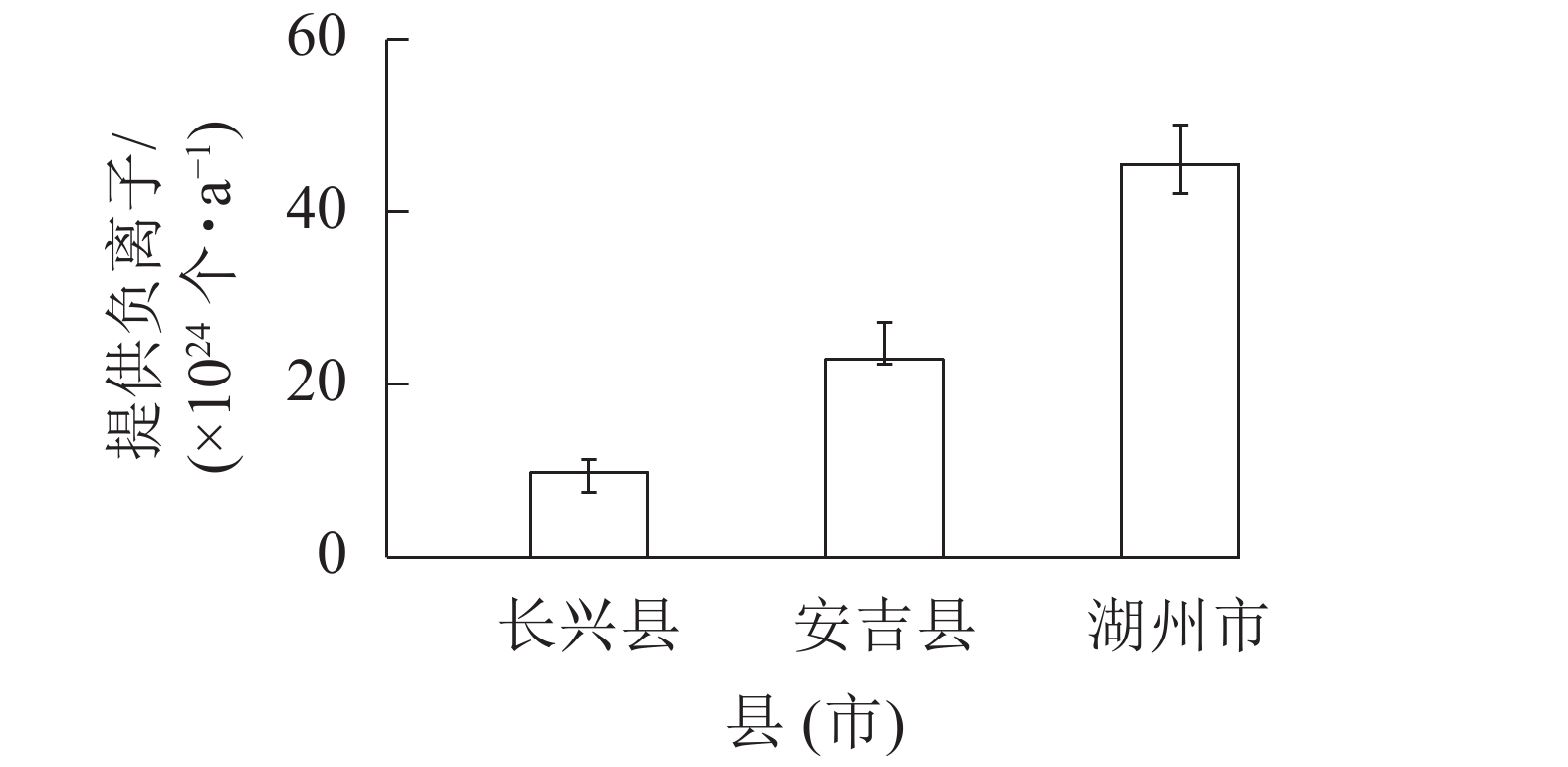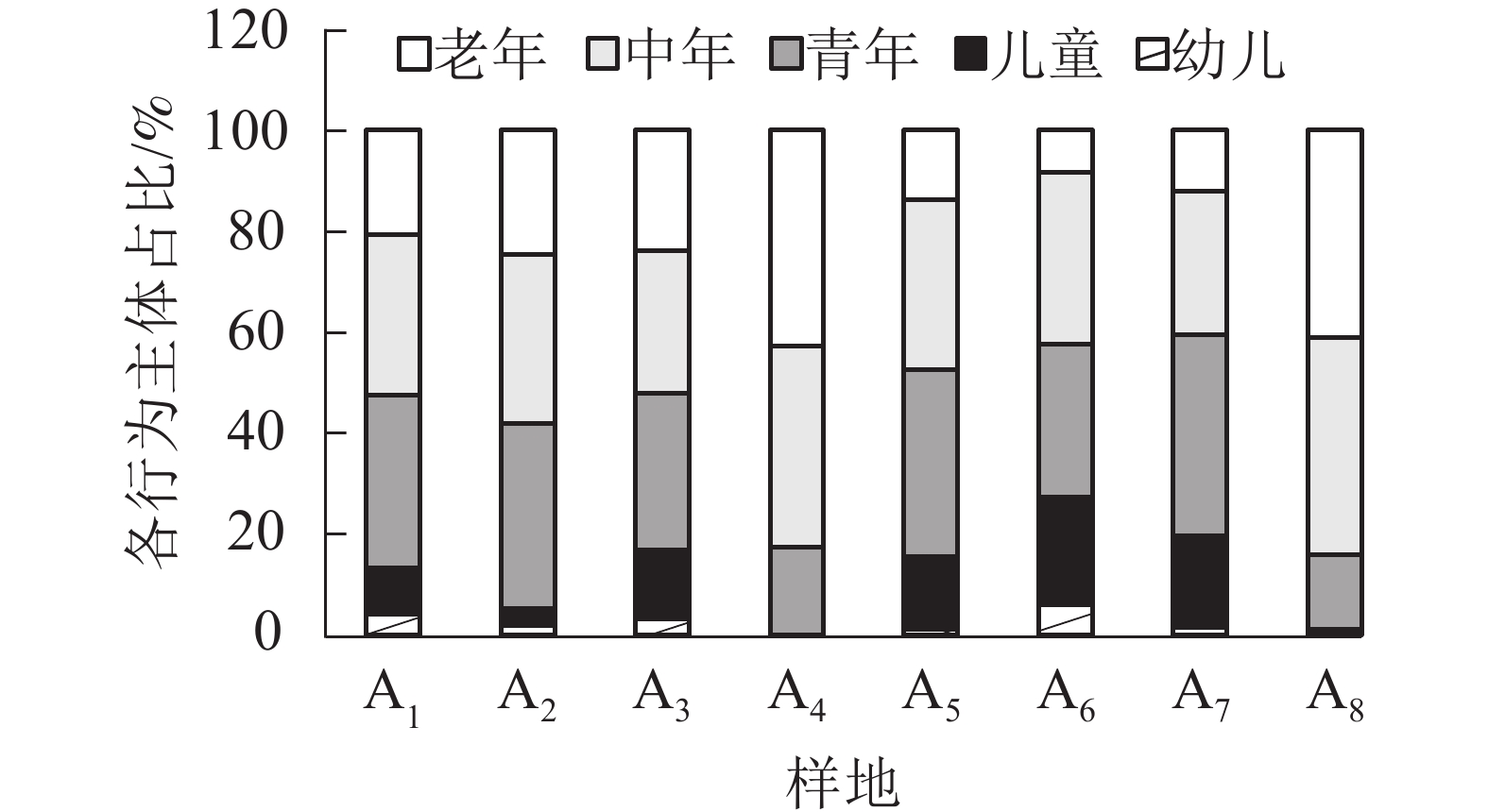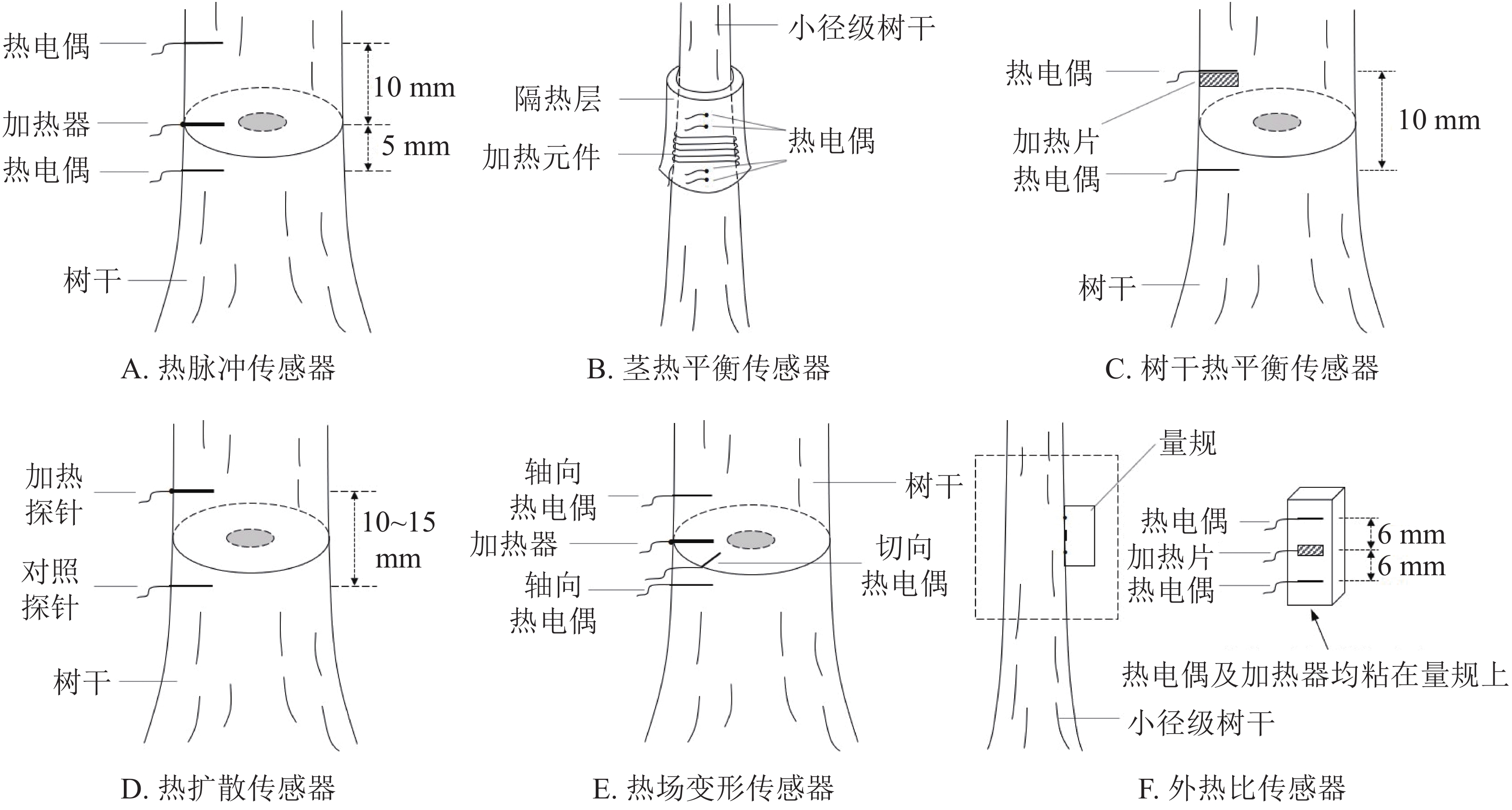2022 Vol. 39, No. 2
2022, 39(2): 233-243.
doi: 10.11833/j.issn.2095-0756.20210248
Abstract:
Objective This study, with Sequoia sempervirens, Taxodium distichum and T. distichum var. imbricatum in humid regions selected as subjects, is aimed at an analysis of the quantitative relationships among the water transport, anatomical structure, and mechanical strength of the xylem of the branches and roots of the Taxodiaceae species and a discussion of the trade-off between the anatomy and function of the xylem at the organ and cross-species levels. Method Targeting the S. sempervirens, T. distichum and T. distichum var. imbricatum grown in Mount Tianmu, Zhejiang Province, with air injection method employed, efforts were made to measure the specific sapwood conductivity (Ks) and cavitation resistance (P50) before the indexes regarding the water transport such as tracheid wall thickness (Tt), pit membrane area (Apm), pit aperture area (Apa), pit membrane diameter (Pd), pit aperture diameter (Ad), hydraulic diameter (Dh)、tracheid density (Nt), aperture opening ratio (Rap) and pit density (Npm) were measured and calculated. Then, the wood density (Dw) and thickness-to-span ratio (Ttob) related to mechanical strength were calculated. Finally, an analysis was conducted of the correlation between water transport and anatomical structure. Result The roots demonstrated higher hydraulic conductivity yet weaker cavitation resistance than the branches and Ks in branches of S. sempervirens and T. distichum, and roots of S. sempervirens, T. distichum and T. distichum var. imbricatum was positively correlated with P50, while Ks in branches of T. distichum was slightly negatively correlated with P50 (R2=0.03, P=0.35), showing no efficient-safety trade-off at the organ level. There was a trade-off between Ks and P50 across species, following a negative power function of −2.23 (R2=0.91, P<0.001). There was significant negative correlation between Ks and Dw (R2=0.37, P<0.01), Ks and Ttob (R2=0.20, P<0.01), P50 and Ttob (R2=0.20, P<0.01) in branches of S.sempervirens. Conclusion The safety and efficiency of the xylem of the branches and roots of the three plants were all low, and given the different structural requirements for high safety and high efficiency of the three plants, there was no efficiency-safety trade-off at the organ level. [Ch, 7 fig. 1 tab. 48 ref.]
2022, 39(2): 244-251.
doi: 10.11833/j.issn.2095-0756.20210628
Abstract:
Objective The anatomical structure of xylem is the basis of plant hydraulic function and water use strategy. There are significant differences in vessel distribution and morphology between diffuse-porous and ring-porous wood species. The purpose of this study is to compare anatomical structure and hydraulic function of xylem of the two wood species, as well as the quantitative relationship between structure and function, so as to understand the water adaptation mechanism of different wood species. Method Three diffuse-porous species (Liquidambar formosana, Salix matsudana, Michelia maudiae) and three ring-porous species (Quercus dentata, Melia azedarach, Juglans cathayensis) in Jigongshan Nature Reserve, Henan Province, were selected to study the branch hydraulic function (specific conductivity, Ks and embolism resistance, P50) and anatomical structure, and the relationship between hydraulic function and anatomical structure was quantitatively analyzed. Result Ks of the three ring-porous species was higher and P50 of the three diffuse-porous species was stronger. At the species level, Ks of M. maudiae was negatively correlated with P50 (P<0.05), and there was a tradeoff between hydraulic efficiency and safety. Compared with the three ring-porous wood species, the three diffuse-porous species had higher vessel density, vessel thickness span ratio, smaller vessel diameter and vessel wall thickness. Conclusion The ring-porous species tend to significantly improve their water delivery efficiency by increasing vessel diameter to avoid water potential decline and reduce the risk of embolism. The ratio of vessel wall thickness and vessel thickness span in the xylem structure of the diffuse-porous species has important effects on plant water transfer function. [Ch, 5 fig. 1 tab. 32 ref.]
2022, 39(2): 252-261.
doi: 10.11833/j.issn.2095-0756.20210813
Abstract:
Objective Plant hydraulic system needs to adapt to the changing water environment. This study aims to quantify the relationship between plant hydraulic properties and xylem anatomical structure in different habitats, so as to understand the adaptation strategies of plants to water changes. Method Taking 7 species of gymnosperms and 7 species of angiosperms in subtropical zone as research materials, the differences of embolic resistance (water potential with 50% loss of plant hydraulic conductivity, P50), water transport efficiency (Ks) and anatomical structure of plants in different habitats (natural habitat and artificial habitat) were compared and analyzed, and the relationship between plant hydraulic properties and xylem anatomical structure was explored. Result (1) In different habitats, Ks of plants in natural habitat was larger, and P50 was smaller. The plant anatomical structure traits had a certain indication of plant hydraulic traits in different habitats. (2) Correlation analysis showed that the conduit hydraulic diameter and conduit density of angiosperms were significantly correlated with Ks and P50 (P<0.05), but the correlations showed the opposite trends in different habitats. The correlation of tracheid hydraulic diameter and tracheid density of gymnosperms with Ks and P50 showed the same trend in both habitats. Conclusion It may be common for plants to adapt to relatively arid environment by increasing water transport efficiency in humid areas. The differences in xylem structure and function may be the reason for the differences in plant water strategies in the same habitat. [Ch, 6 fig. 2 tab. 43 ref.]
2022, 39(2): 262-271.
doi: 10.11833/j.issn.2095-0756.20210171
Abstract:
Objective This study aims to construct quantitative indicators to quantitatively express the composition characteristics of tree species, which is the technical basis for accurate forest management. Method Based on the theory of biodiversity and the characteristics of tree species composition and management requirements, the diversity index of tree species composition (ISCD) was constructed. The variation pattern and basic characteristics of index under different tree species were analyzed by “ten method”. 322 coniferous and broad-leaved mixed forest plots in the inventory of national forest resources of Zhejiang Province were selected as the application objects. ISCD and existing major α-diversity indices were compared. Result ISCD covered information on the number of tree species, the relative abundance of tree species and the proportion of tree species in the stand, which not only highlighted the number of tree species, but also fully expressed the uniformity and mixing degree of tree species composition. ISCD could express the changing characteristics of tree species composition completely, independently and effectively. Compared with the major α-diversity indices, ISCD improved the differentiation and sensitivity of tree species, closely evaluated the uniformity and mixing degree of tree species structure, and reasonably and effectively reflected the tree species diversity. Conclusion Compared with the majorα-diversity indices, the construction of quantitative index can quantitatively characterize the diversity of tree species composition in a more detailed, comprehensive and targeted manner, and solve the problem that it is difficult to effectively distinguish the composition types of tree species in different stands, such as low richness and high uniformity, high richness and low uniformity. [Ch, 7 fig. 7 tab. 28 ref.]
2022, 39(2): 272-279.
doi: 10.11833/j.issn.2095-0756.20210272
Abstract:
Objective The purpose is to construct an individual tree biomass model of Myrica rubra, so as to provide a theoretical basis for sustainable management and accurate biomass estimation of M. rubra plantation. Method Based on the data of 48 M. rubra samples and the independent individual tree biomass model established with ground diameter, tree height and crown breadth as independent variables, the compatible individual tree biomass model of M. rubra plantation in Xianju County of Zhejiang Province was studied by using the nonlinear error variable model. Result The power function model with ground diameter (x1) as independent variable had the maximal R2, and the models of leaf biomass (y1), branch biomass (y2), root biomass (y3) and total biomass (y0) were y1=0.004x12.795, y2=0.003x13.048, y3=0.002x13.141 and y0=0.010x12.995 respectively. The model with ground diameter as independent variable had the maximal R2 and accuracy, and the relevant parameters of c0, b0, r1, r2, r3 and r4 were 0.084 0, 2.162 7, 0.780 0, 0.779 9, 0.224 3 and 0.204 5 respectively. The distribution law of leaf, branch and root biomass was basically similar with the increase of ground diameter, tree height and crown width. The proportion of branch and root biomass in the total biomass was increasing, while the leaf biomass was gradually decreasing. With the increase of stand ages, the biomass of each component evolved rapidly to branches, roots, and leaves in descending order. Conclusion When using the individual tree biomass model of M. rubra with unitary compatibility for estimation, the power function model with ground diameter as independent variable has the largest determination coefficient and estimation accuracy. Ground diameter is the most suitable variable for estimating M. rubra biomass. [Ch, 1 fig. 4 tab. ref. 31]
2022, 39(2): 280-288.
doi: 10.11833/j.issn.2095-0756.20210323
Abstract:
Objective This study is aimed to quantify the impact of environmental factors on the distribution of species under the Pinus tabuliformis plantation in Zhongtiao Mountain, Shanxi Province so as to provide a theoretical basis for further revealing the maintenance mechanism of species diversity under the P. tabuliformis plantation in Zhongtiao Mountain. Method With survey data collected of the plant and soil of different types of P. tabuliformis plantation in Zhongtiao Mountain, an analysis was conducted of the influence of environmental factors on the distribution of species under the planted P. tabuliformis plantation. Result The interpretation rates (adjusted explanation rates) of environmental factors on the distribution of shrubs, herbs, and liana species were 45.7% (34.5%), 37.0% (20.4%), and 43.4% (30.6%), respectively. The distribution of species under the P. tabuliformis plantation is mainly affected by abiotic environment. Altitude and soil aeration are the key environmental factors that affect the distribution of species in this area. The distribution of shrubs and lianas under the P. tabuliformis plantation are mainly affected by altitude whereas the distribution of herbs was mainly affected by soil aeration, and the species diversity of the P. tabuliformis plantation declined with the increase of altitude and soil aeration. Conclusion The environmental filtering formed by the key shaping effects of topography (altitude) and soil (soil aeration) factors on the regional community habitat are the key factors that affect the distribution of understory species of P. tabuliformis plantation in Zhongtiao Mountain. [Ch, 1 fig. 5 tab. 39 ref.]
2022, 39(2): 289-296.
doi: 10.11833/j.issn.2095-0756.20210343
Abstract:
Objective This study aims to identify the floristic characteristics of seed plants in Qinghai area of Qilian Mountain National Park, so as to provide scientific basis for the protection and utilization of plant resources in this area. Method Using the method of route survey and sample survey, the seed plant information was collected, and the floristic composition, dominant groups, characteristic groups, and geographical components were analyzed. Result (1) There were 1 058 species (including infraspecific taxa) of wild seed plants belonging to 340 genera and 71 families, which accounted for 75.53%, 61.04%, 42.37% of the total families, genera and species of seed plants in Qinghai Province respectively. Asteraceae and Poaceae were the only big families with more than 100 species, but no big genera with more than 30 species were found. The families and genera were diverse in composition. (2) The dominant phenomenon was obvious, and the characteristic taxa were prominent. There were 10 dominant families, 23 dominant genera, and 8 characteristic families, and 20 characteristic genera, among which 3 families were both dominant families and characteristic families, and 9 genera were both dominant genera and characteristic genera. (3) There were 6 areal types of seed plant families, including 23 families of temperate components, accounting for 67.64% of the total families. There were 13 areal types of genera, and 246 genera with temperate components, accounting for 86.32% of the total genera. (4) Endemic families and genera were poor. There were no endemic families and 10 genera in China. (5) A variety of flora elements intersected, infiltrated and specialized, and were young. Conclusion Qinghai area of Qilian Mountain National Park is rich in seed plant species. The geographical composition is diverse and the temperate nature is remarkable. [Ch, 8 tab, 24 ref.]
2022, 39(2): 297-306.
doi: 10.11833/j.issn.2095-0756.20210223
Abstract:
Objective With an exploration of the effects of stand density and spacing configurations on the non-structural carbohydrate (NSC) of poplar throughout the growing season, this study is aimed to investigate the NSC concentration in various organs of poplar under different stand conditions. Method Employing the nested design with density set as the first factor and plant spacing set as the second factor, foliage, branches, stems, and roots of Populus × euramericana ‘Nanlin 95’ were sampled from the experimental stands, in July, their poplar growing season before the soluble sugar and starch in each of them were measured. Result The soluble sugar content in the four organs of poplar followed the order of foliage>root>branch>stem during the growing season whereas the starch concentration followed the order of stem>root>branch>foliage. There was a significant difference in the content of soluble sugar among poplar leaves with different densities and plant spacings (P<0.01). The contents of soluble sugar and starch in roots were significantly affected by the spacing configurations (P<0.01), while the influence of stand density and spacing configuration on NSC in branch and stem was not significant and the total NSC content of stand was not significantly affected by stand densities (a comparison between 278 and 400 plants·hm−2), but significantly affected by spacing configurations (P<0.05). Conclusion For poplars in northern Jiangsu Province during the growing season, the carbon resources are generally distributed to the parts above the ground with the stems as the primary storage organ. Within a certain density range (278−400 plants·hm−2), the sugar content in poplar leaves would increase with an increase in density. With the same stand densities, the square configuration would be conducive to the accumulation of NSC in poplar organs, which could in turn promote plant growth and stand development, increasing the carbon sequestration potential of the stand. [Ch, 6 fig. 2 tab. 35 ref.]
2022, 39(2): 307-317.
doi: 10.11833/j.issn.2095-0756.20210332
Abstract:
Objective The objective is to screen the best reference genes (RGs) for the study of anthocyanin biosynthesis in Liriope spicata fruits. Method Based on the transcriptome sequence data (unpublished), 15 candidate RGs were selected according to the coefficient of variation and fold change value of gene expression. The expression levels of candidate RGs were determined by RT-qPCR in L. spicata young and mature fruits. The expression stability of these genes was evaluated using software packages and algorithms including ΔCt, geNorm, NormFinder and Bestkeeper. Finally, 10 target genes (C4H, CHS-1, CHS-2, MT, UFGT-1, UFGT-2, MYB-1, MYB-2, MYB-3, bHLH) from 6 gene families (C4H, CHS, MT, UFGT, MYB, and bHLH) were screened to verify the selected reference gene combinations. Result There was difference in the ranking of candidate RGs obtained by the 4 methods, so the geometric mean of the 4 methods was used as the comprehensive ranking. Based on geNorm, there were 4 recommended optimal internal parameters, namely CNNM, GPR107, EF1-α and G6PD-2, which were the most stable, while PDP was the most unstable. The standardization verification of the expression levels of 10 target genes showed that there was no significant difference between CNNM and GPR107 as RGs combination and 4 genes as RGs combination, and the correlation coefficient reached 0.999 9. It was more feasible to select the dual RGs combination than 4 RGs combination, while unsuitable RGs (PDP) would cause serious deviation to RT-qPCR results. Conclusion The combination of CNNM and GPR107 is the best reference gene for anthocyanin biosynthesis in L. spicata fruit. [Ch, 6 fig. 5 tab. 39 ref.]
2022, 39(2): 318-328.
doi: 10.11833/j.issn.2095-0756.20210361
Abstract:
Objective This study aims to explore the functions of aquaporin (AQP) gene family (CsAQP) in Cucumis sativus. Method The family members were identified by whole genome analysis, and their protein physical and chemical properties, phylogenetic relationships, selection pressure, gene structure, conserved motifs, cis-acting elements and protein interactions were analyzed. Result There were 33 AQP genes in C. sativus genome, which contained 2−5 exons and were unevenly distributed on chromosomes. According to the evolutionary relationship, the AQP gene family was divided into 5 subfamilies. Genome repeat analysis showed that there were 2−3 pairs of gene tandem repeats on chromosome 5 and 6 respectively. The ratios of synonymous substitution (Ks) and nonsynonymous substitution (Ka) of these genes were calculated. The results showed that they were less than 1, indicating that their evolution was affected by purification selection. The analysis of cis-acting regulatory elements showed that most of the elements in the gene promoter region were closely related to hormone regulation, light response, and stress resistance. Conclusion Through the whole genome scanning, 33 AQP family members are obtained from C. sativus genome, which belong to 5 subfamilies and map on 7 chromosomes. The upstream promoter region contains stress-related elements, and some genes participate in tandem replication and undergo purification selection. [Ch, 6 fig. 4 tab. 26 ref.]
2022, 39(2): 329-337.
doi: 10.11833/j.issn.2095-0756.20210279
Abstract:
Objective This study aims to analyze the genetic diversity and population genetic structure of 121 individual plants from 5 wild populations of male Torreya grandis using SSR fluorescent markers, in order to provide reference for genetic background, germplasm resource evaluation and elite germplasm screening of male T. grandis. Method The genomic DNA of T. grandis was extracted by CTAB method, and the primers were designed. The polymorphic sites of the male T. grandis were detected by capillary electrophoresis using fluorescent primer PCR amplification. Result A total of 85 alleles were detected by 24 pairs of primers, ranging from 2−7, with an average of 3.542 per marker, among which the average effective alleles were 1.915. The average Nei’s genetic diversity index and Shannon’s information index in 5 populations were 0.365 and 0.608 respectively. Among the 5 populations, the percentage of polymorphic sites ranged from 75.00% to 95.83%, with an average of 82.50%. The order of genetic diversity of the 5 populations from large to small was Shengzhou, Lin’an, Fuyang, Huangshan and Chun’an. The gene flow among the populations was 4.172, the coefficient of gene differentiation was 0.096, and the degree of genetic differentiation was very low. The results of clustering analysis showed that the genetic similarity coefficient (GS) of the 5 populations varied from 0.865 to 0.978, with an average of 0.932. Conclusion The genetic diversity of male T. grandis populations is relatively rich. The genetic variation of the male T. grandis mostly exists within the population, but the gene exchange is also present between the populations. The 5 populations can be divided into 3 groups, which is similar to the results of phenotypic genetic diversity analysis. [Ch, 4 fig. 6 tab. 32 ref.]
2022, 39(2): 338-346.
doi: 10.11833/j.issn.2095-0756.20210226
Abstract:
Objective This study aims to investigate the effects of different thinning retention density and different proportion of N and P fertilizer application on the growth and timber structure of mature Chinese fir forest. Method The 27 year-old Chinese fir plantation with a site index greater than 22 was selected, and 9 standard plots were set up by orthogonal experimental design. The thinning retention densities were 300, 600 and 825 plants·hm−2. The application rates of N fertilizer were 0, 100 and 200 g·plant−1, and the application rates of P fertilizer were 0, 250 and 500 g·plant−1. Result Excessive thinning retention density limited the diameter at breast height (DBH) increase of mature Chinese fir. Too small thinning retention density reduced the stand stock. Thinning and fertilization could effectively promote the growth of individual tree volume. Higher N application rate could promote the growth of DBH, tree height and average individual tree volume of Chinese fir, and the mixed application of N and P could increase the accumulation of stand volume more effectively. The thinning retention density, the application rate of N and P fertilizer all significantly affected the yield of large-diameter timber of mature Chinese fir forest (P<0.05). The thinning retention density and the application rate of P fertilizer had a significant impact on the yield of large-diameter timber of mature Chinese fir forest (P<0.05), while the application rate of N fertilizer had little impact. Under the site index of 22, the combination that produced the maximum yield and outturn rate of large-diameter timber of mature Chinese fir forest was thinning retention density of 825 plants·hm−2, N fertilizer application rate of 200 g·plant−1 and P fertilizer application rate of 250 g·plant−1. Conclusion Under the condition of high site index, the outturn and yield of large-diameter timber of Chinese fir could be effectively promoted by keeping appropriate thinning density and increasing N and P fertilizer application in the cultivation process of mature Chinese fir forest. [Ch, 6 fig. 4 tab. 27 ref.]
2022, 39(2): 347-355.
doi: 10.11833/j.issn.2095-0756.20210283
Abstract:
Objective This study, with an investigation of the effects of type and concentration of plant growth regulators, soaking time and substrate type on the rootability and adventitious root development of Ilex × altaclerensis ‘Belgica Aurea’ cuttings, is aimed to provide a theoretical and practical basis for the softwood propagation, introduction and domestication of Ilex. Method With the semi-lignified stems of I. × altaclerensis ‘Belgica Aurea’, selected as the propagation materials, an orthogonal experimental design of three factors (type and concentration of plant growth regulators, soaking time, and type of substrate) of three levels was applied to research the plant softwood cutting propagation with an investigation of the survival rate, rooting rate, length of longest primary adventitious root and root effect index of the cuttings with various treatments after 80 days since cutting. In addition, NAA was used to promote the root formation of the cutting, with observations made of the external morphological changes of the cuttings. Besides, observations were made of the anatomical structure of the cuttings via the paraffin sections regularly produced with the base of the cuttings. Then, morphological and cytological observations were made of the callus with the scanning electron microscope and transmission electron microscope. Result (1) The cuttings soaked in 1 000 mg·L−1 IBA solution for 10 s had a best rootability with significant difference in related index from the other treatments (P<0.01) with an increase of 12.74%−48.83% in the rooting rate. (2) There was no latent root primordia in the cuttings and anatomical observations showed that the plant was considered as bark inductive root formation type with the adventitious root primordia originating from the intersection of pith ray and vascular cambium. (3) The low rooting rate attributed to the 1 or 2 layers of annular sclerenchyma between the cortex and phloem. (4) No root primordia was observed in the callus, whose formation was independent of the adventitious root development, and rooting was not the final result of callus development. (5) There were two types callus types in the rooting process of the cuttings: embryonic callus and non-embryogenic callus. The former were white and closely arranged with the surface cells clustered and distributed in a smaller size, the nuclei being large and the organelles being abundant. The latter were dark yellow with obvious vacuolation and most of the surface cells were not plump or even dead without any organelles observed. Conclusion This study has initially screened out the best factor combination for I. × altaclerensis ‘Belgica Aurea’ cuttings, revealed its cutting rooting mechanism. [Ch, 4 fig. 3 tab. 34 ref.]
Construction of endophytic strain bank of seabuckthorn nodule and an analysis of microbial diversity
2022, 39(2): 356-363.
doi: 10.11833/j.issn.2095-0756.20210246
Abstract:
Objective This study is aimed to conduct an investigation of the microbial diversity endophytic bacteria in rhizobia of Hippophae rhamnoides which play an important role in nitrogen fixation and plant growth and research the construction of rhizobia endophytes. Method With the employment of 16S rRNA high-throughput sequencing technology, an exploration was conducted of the relative abundance and diversity of endophytes in Ulange wood rhizobia of Mongolian H. rhamnoides in Dengkou County before the endophytes were isolated and purely cultured to complete the construction of endophytic strains library. Result (1) A total of 96 pure culture strains were obtained by traditional isolation, with 4 phyla, 8 classes, 8 orders, 13 families, and 19 genera and Proteobacteria and Firmicutes are of relatively higher relative abundances in terms of phyla classification. (2) With an analysis of 6 groups of samples (M1−M6) consisting of 14 phyla, 34 classes, 89 orders, 148 families, and 314 genera by high-throughput sequencing, Actinomycota and Proteobacteria have higher relative abundance, and the sum of the relative abundance of the two is between 87.50%−97.10% in terms of phylum classification. As for the taxonomic level of the genus, the genus Frankia occupies an absolute advantage with the relative abundance being between 20.12% and 74.81%, and the average relative abundance being 51.49%. With M5 having the largest Shannon and Simpson indexes and M4 having the lowest species diversity, both M5 and M6 have higher levels of species abundance whereas M4 species has the lowest abundance. (3) The results of high-throughput sequencing and pure culture methods are significantly different, especially in the taxa of families and genera. Conclusion Both methods reflected the diversity of endophytes in sea buckthorn rhizobia, but the pure culture method could only isolate some endophytes, and it was difficult to evaluate the species composition and relative abundance. Also, high-throughput sequencing analysis could reflect the diversity better and lay the foundation for optimizing pure culture conditions for the isolation of specific species. [Ch, 3 fig. 3 tab. 41 ref.]
2022, 39(2): 364-371.
doi: 10.11833/j.issn.2095-0756.20210311
Abstract:
Objective With two different lignin-degrading bacteria, strain A (Aspergillus nidulans) and strain Q (Trametes sp.) used as materials, this study is aimed to research the production of high-efficiency solid fermentation inoculants for degradation or composting of garden greening wastes. Method First, a single factor experiment was employed to determine the types of carbon and nitrogen sources and additional nutrient components of the solid fermentation medium. Then, the orthogonal experiment design was adopted to optimize the amount of carbon and nitrogen sources to be added, based on which, efforts were made to figure out the inoculation amount of additional nutrient components and the best solid medium fermentation conditions of the two lignin-degrading bacteria using a uniform experiment combined with the artificial neural network algorithm. Result The optimized solid inoculum medium matrix (mass ratio) of strain Q was with 30.000 g bran as the base, 3.000 g soybean meal powder and 0.188 g corn flour added, with extra nutrients (based on the mass ratio of the matrix) being MgSO4 1.434%, KH2PO4 0.115%, FeSO4·7H2O 1.497% whereas the inoculation conditions being 6.000% of inoculation, with the ratio of material to water as 1.000∶0.992, and the protective agent as 1.000%. The optimized solid inoculum medium matrix (mass ratio) of strain A was with 30.000 g bran as the base, 1.500 g soybean meal powder and 1.500 g sodium lignosulfonate were added, with extra nutrients (based on the mass ratio of the matrix) being MgSO4 0.123%, KH2PO4 0.213%, FeSO4·7H2O 1.280% whereas the inoculation conditions being 21.000% inoculation amount with the ratio of material to water as 1∶1 and the protective agent as 19.000%. Strain Q and strain A were fermented on the optimized medium for 7−9 days to get the largest fermentation biomass with the D(260) value of strain Q being 0.596 and the D(260) value of strain A being 0.478. Conclusion The solid inoculum prepared by two lignin-degrading bacteria under optimized fermentation conditions were featured with high biomass and certain potential for degrading the lignin of landscaping wastes. [Ch, 6 fig. 5 tab. 22 ref.]
2022, 39(2): 372-379.
doi: 10.11833/j.issn.2095-0756.20210287
Abstract:
Objective This aim is to investigate the antagonistic effect of endophytic fungi of Picea mongolica on Fusarium sp., in order to provide the basis for the development and utilization of biocontrol fungi. Method Result The four endophytic antagonists showed antagonistic activity against Fusarium sp. The antagonistic activity of SDYS180 fermentation broth was the highest, reaching 78.67%. The antagonistic activity of SDYS95 strain was the highest, up to 69.64%, and the antagonistic activity of volatile metabolites of SDYS63 was the highest, up to 16.94%. The four endophytic antagonists showed different degree of antagonistic activity against Fusarium sp. in potted P. mongolica. The plant height, ground diameter and root length of infected seedlings increased by 17.12%, 32.64% and 16.56% respectively by inoculating SDYS180. In the infected seedlings inoculated with SDYS95, MDA content decreased by 5.27%, SP content, POD activity, SOD activity, and CAT activity increased by13.41%, 224.46%, 37.05% and 9.02%, respectively. Conclusion Strains SDYS180 and SDYS95 are selected as the dominant antagonistic strains to control seedling blight of P. mongolica. [Ch, 8 fig. 1 tab. 23 ref.]
2022, 39(2): 380-387.
doi: 10.11833/j.issn.2095-0756.20210339
Abstract:
Objective With an analysis of the data of fire spots in Kunming City from 2000 to 2015, this study is aimed to determine the main driving factors of forest fires, establish the forest fire prediction model in Kunming City, map the forest fire-risk zones so as to provide reference for the prevention and management of forest fires in Kunming City. Method First, with 17 forest fire driving factors selected, a Logistic regression forest fire probability model was constructed on the basis of the satellite forest fire data, including meteorology, terrain, vegetation, artificial, and so on. Then five intermediate models were employed to select the significant variable factors for whole samples before the model was tested using ROC curve. Based on the modeling results of the whole samples, an analysis was conducted of the main forest fire driving factors in Kunming City with the best threshold for probability of forest fire calculated. At last, five fire-risk zones were determined based on the results obtained via the Logistic model. Result Among the nine driving factors were altitude, distance from residential areas, distance from railways, NDVI value, monthly average surface temperature, monthly average air pressure, monthly average relative humidity, monthly average wind speed and per capita GDP. The prediction accuracy of Logistic model was as high as 81.7%. The area AUC under ROC curve is 0.905. The best threshold of division was 0.342, the area percent of the five-level fire danger zones were 48.82%, 35.17%, 11.26%, 2.55% and 2.2% respectively. Conclusion The main driving factor for forest fire in Kunming City is the meteorological factor with the high fire risk areas in Kunming City concentrated in the southwest region including Wuhua District, Panlong District, Guandu District, Chenggong District, Xishan District and Anning City. [Ch, 4 fig. 3 tab. 22 ref.]
2022, 39(2): 388-395.
doi: 10.11833/j.issn.2095-0756.20210289
Abstract:
Objective This study aims to explore the soil environmental quality of a reclaimed land in Jinyun County, Zhejiang Province. Method A soil environmental quality survey was carried out in the reclaimed land in Jinyun County in 2020. A total of 17 groups of soil-rice grain composite samples were collected to determine the contents of cadmium (Cd), lead (Pb), chromium (Cr), mercury (Hg), and arsenic (As) in soil and grain. The degree of soil heavy metal pollution was evaluated by single-factor pollution index evaluation method, Nemerow comprehensive index method, potential ecological risk evaluation method and ecological risk early warning index (IER). Result The contents of Cd, Cr, Pb, Hg, and As in 0−20 cm soil layer of the reclaimed plot in Jinyun County were 0.33 , 107.74, 53.40, 0.03, and 18.42 mg·kg−1, respectively. Among them, arsenic in 35.29% of the points exceeded the standard, and the other four heavy metals did not exceed the screening value of soil pollution risk of agricultural land. The average contents of Cd and As were higher than the soil background value of Zhejiang Province. Cr and Pb contents in rice at some points of the plot exceeded the national standard. The average value of Nemeiro Comprehensive Pollution Index in the study area was 0.69, and 58.82% of the points in the study area were in the alert range. The geo-accumulation index ranging from large to small was Cd (0.08), Pb (0.01), As (−0.32), Cr (−0.35), and Hg(−3.02). The average value of potential ecological risk index (IR) was 74.10, indicating a slight ecological risk. IER reached the moderate early warning level. Conclusion Cr and Pb contents exceed the national standard in rice at some points of the reclaimed land. No heavy metals exceeding the standard are observed in soil at any point, but there exists a certain ecological risk. Cd, Cr and Pb are the main ecological risk factors in the study area, which should be paid more attention to in the future. [Ch, 7 tab. 24 ref.]
2022, 39(2): 396-404.
doi: 10.11833/j.issn.2095-0756.20200119
Abstract:
Objective The objective is to study the adsorption property of dendritic composite adsorbent synthesized by chemical modification of mesoporous molecular sieve for the treatment of heavy metal wastewater. Method The composite adsorbent SBA-15-G3 of dendritic compounds was synthesized by chemical modification with mesoporous material SBA-15 as silicon source, and the functional adsorbent SBA-15-G3-SH was successfully synthesized by grafting sulfhydryl onto SBA-15-G3 with thioglycolic acid as coupling agent. The structure and physicochemical properties of the materials were characterized by field emission scanning electron microscopy (FESEM), energy dispersive X-ray spectroscopy (EDS), Fourier-transform infrared spectroscopy (FTIR), X-ray powder diffraction (XRD), Zeta potential analysis, and nitrogen adsorption-desorption isotherms (BET). The effects of pH, time, initial Cr(Ⅵ) concentration, and temperature on the adsorption properties were studied through the adsorption of Cr(Ⅵ) in aqueous solution by SBA-15-G3-SH. The adsorption isotherms, kinetics and thermodynamic characteristics of SBA-15-G3-SH adsorbent were analyzed. Langmuir and Freundlich adsorption isotherm models were used to analyze the experimental data. Result The Langmuir adsorption isotherm model fitted the adsorption process well, and the adsorption kinetic model accorded with the pseudo second-order kinetic equation. Conclusion The adsorption mainly results in the formation of stable compounds through the surface complexation of —SH group on the surface of SBA-15-G3-SH and the electrostatic attraction of heavy metal ions. The thermodynamic results show that Cr(Ⅵ) adsorption onto SBA-15-G3-SH is a spontaneous exothermic process. The high adsorption performance indicates that the SBA-15-G3-SH is an efficient adsorbent to eliminate Cr(Ⅵ) from wastewater. [Ch, 10 fig. 3 tab. 21 ref. ]
2022, 39(2): 405-414.
doi: 10.11833/j.issn.2095-0756.20210254
Abstract:
Objective The objective is to prepare thermo-sensitive molecularly imprinted hydrogels (T-MIHs). Method Tris (2-chloropropyl) phosphate (TCPP) was used as template molecule, acrylic acid as functional monomer, N-isopropylacrylamide as thermo-sensitive monomer, N,N′-methylene-bis-acrylamide as crosslinking agent and ammonium persulfate as initiator. The thermo-sensitive T-MIHs was prepared by free radical polymerization. The structure of the raw materials was characterized by infrared spectroscopy, nuclear magnetic resonance spectroscopy, scanning electron microscopy, and differential scanning calorimeter. The specific recognition performance of the hydrogel on template molecules was also investigated. Result T-MIHs was successfully prepared and its lowest critical dissolution temperature was 39 ℃. The adsorption isotherm conformed to the Langmuir adsorption theoretical model, and the adsorption kinetics conformed to the pseudo-first-order kinetic model. The molecularly imprinted hydrogel showed a good selective recognition for TCPP, and its adsorption capacity for the template molecule was 119.32 mg·g−1, the imprinting factor α=3.75, the selection factor β=2.75, and the identification of TCPP was temperature responsive. Conclusion T-MIHs has excellent adsorption effect on TCPP in aqueous solution, which is of great significance for building thermo-sensitive imprinted hydrogels with high selectivity for organophosphorus flame retardants. [Ch, 9 fig. 4 tab. 30 ref.]
2022, 39(2): 415-422.
doi: 10.11833/j.issn.2095-0756.20210291
Abstract:
Objective Oriented strand board (OSB) is an environmental- and eco-friendly material produced with renewable, mainly fresh wood from logs with either small or large diameter logs. Composed of cross-oriented layers consisting of thin and rectangular wooden flakes or strands that are compressed and bonded together with synthetic resins, it is an important engineered wood product widely applied in load bearing situations and its mechanical performance is largely dependent on the moisture content (MC) and water sorption/desorption. Therefore, with an investigation of the compressive strength (CS) of samples at different MC and water sorption/desorption cycles, this study is aimed to research the effect of water on mechanical performances of OSB. Method With samples selected from two types of OSB panels with different thicknesses, conditioned to three different MCs and treated with multiple water sorption/desorption cycles, supervision was conducted of the dimensional changes, CS and strain distribution of samples were monitored. Then the CS was measured using an Instron universal testing machine with the strain distribution recorded using digital image correlation (DIC) simultaneously. Result (1) An increase in both MC and water sorption/desorption cycle could lead to an increase in thickness and compressive deformation; (2) The CS of the samples was significantly decreased when they were conditioned with a relative humidity of 95% and a MC of approximately 20%; (3) High MC could reduce the final thickness of OSB after compressing whereas water sorption/desorption cycles could slightly decrease the final thickness of OSB after compressing; (4) High MC and multiple water sorption/desorption cycles were able to change the relationship between CS and displacement from two domains linear to almost linear which attributed to the disappearance of the samples’ plastic deformation domain; (5) High MC can soften wood strands and enlarge internal voids, which could lead to strain increase and the change of strain distribution profile while water sorption/desorption cycles degraded the internal structure of samples and (6) Water sorption/desorption cycles might cause compression strain accumulation in surface layers. Conclusion Water affects the CS of OSB in various aspects including the softening of wood strands, enlargement of voids among wood strands, diminishing of trapped stress from hot-pressing with different MCs. Such findings will help with the generation of effective manufacturing strategies that aim at good mechanical performance of OSB at different water conditions as well as optimizing the application methods and extending the application fields of OSB. [Ch, 7 fig. 1 tab. 23 ref.]
2022, 39(2): 423-429.
doi: 10.11833/j.issn.2095-0756.20210264
Abstract:
Objective To prevent and control different kinds of wood biohazards, from mold, corrosion, pests to dampness, this study is aimed to develop an organic compound wood preservative containing water based paraffin which is usually classified as emulsifiable concentrates. Method First, fungicides complementary in antibacterial spectrum were screened employing the indoor inhibition zone method before they were compound to figure out the optimal compounding ratio. Then with lambda-cyhalothrin (CLT) used as insecticide and liquid paraffin used as the water repellent, the four of them were compounded before the compound preservative was tested for its strength in the control and prevention of mold, corrosion, dampness and pests by means of indoor tests. Result A wood protection composition preparation with a mass fraction of 0.20% difenoconazole (DCZ), 0.20% iodopropynyl butylcarbamate (IPBC), 0.02% CLT and 40.00% liquid paraffin was prepared by screening of active ingredients. The preparation was diluted 250 times with water and left to stand for 1 hour without stratification, oil separation and sedimentation. While wood treated with the preparation at 5 times dilution, the content of liquid paraffin in the wood was 49.1 kg·m−3, the waterproof efficiency reached 77.8%. While wood treated with the preparation at 20 times dilution, the content of DCZ and IPBC were 71.2 g·m−3, and the mass loss rate by decay fungi were less than 1.0% and the decay resistance grade reached the strong scored as grade I. While wood treated with the preparation at 5 times dilution, the mass concentrations of DCZ and IPBC in the wood was 0.165 g·m−2, the mold infection value was 0 and resulted excellent anti-mold efficacy. While wood treated with the preparation at 10 times dilution, the content of CLT in the wood was 14.7 g·m−3, the intact value by termite decay was 9.2 with a mass loss rate of 2.6%, showed excellent termite resistance. Conclusion The wood preservative developed, when applied after it’s diluted 5−20 times, has displayed a favorable performances in the prevention and control of wood biohazards such as mold, corrosion, pests and dampness. [Ch, 7 tab. 21 ref.]
2022, 39(2): 430-437.
doi: 10.11833/j.issn.2095-0756.20210328
Abstract:
Objective This study is designed to explore the application method of accuracy control of volume of forest ecosystem services (FES) by means of city-county synchronized assessing system. Method Huzhou City of Zhejiang Province was selected as the research site. By setting up 1 city-level module (CLM) and 5 county-level sub-modules (CLSM), 2 systems of plot data assessing (PDA) and sub-compartment data assessing (SDA) were established based on the continuous forest inventory and forest management inventory to form a city-county synchronized assessing mechanism composed of synchronous accessing mechanism, compatibility mechanism and correction mechanism, so as to complete the volume calculation and assessing accuracy control of multiple FES indicators (water conservation, soil conservation, carbon sequestration, nutrient retention and negative ions provision). Result Under the significance level a=0.05, the accuracy of PDA results of each FES indicators at the city level exceeded 90%. Except for negative ions provision, SDA results of other indicators fell into PDA confidence interval. In county-level sub-modules (a=0.05), except for the negative ions provision in Changxing County and Anji County, SDA results of all other indicators fell into PDA confidence interval. Using the correction mechanism, the results of negative ions provision were corrected, and finally the volume and assessing accuracy of 5 FES in Huzhou City in 2018 were obtained. Conclusion The city-county synchronized assessing system can control the accuracy of the quality accounting results of FES at all levels, and the final results of regional FES quality can be determined according to whether SDA results fall into PDA confidence interval. [Ch, 1 fig.5 tab. 28 ref.]
2022, 39(2): 438-445.
doi: 10.11833/j.issn.2095-0756.20210352
Abstract:
Objective With a history of thousands of years, the Shangtang River in Hangzhou is facing the challenge of insufficient vitality. The purpose of this study is to explore the vitality characteristics of the riverside landscape belt of the Shangtang River, so as to provide research support for activating the spatial vitality of the riverside landscape belt of the canal city. Method The landscape space of 8 sample plots [Chengbei Sports Park (A1), Dongxinmen Square (A2), Yongfeng Park (A3), Wangchen Park (A4), Shuiluyuan Site (A5), Qiantaoyuan (A6), Tiandu Park (A7), and Xiyangqiao Park (A8)] in the first-level buffer zone of the Shangtang River were taken as the research objects, and the vitality characteristics of the riverside landscape belt were investigated by behavioral annotation method. The cluster analysis and kernel density estimation (KDE) were used to analyze the survey results. Result (1) From the population dimension, the order of population diversity indicators from large to small were A3 A6, A1, A7, A5, A2, A8, and A4, and the behavior diversity from large to small was A6, A7, A5, A2, A1, A8, A3, and A4. The main reason lied in that the waterfront space of A3 and A6 was more diverse and complex, and historical and cultural sites and landscape facilities attracted people to carry out spontaneous activities. (2) From time dimension, the fluctuation coefficients of crowd activities from large to small were A6, A7, A2, A5, A3, A1, A8, and A4. The number of people with activity duration longer than 30 minutes was A6, A1, A8, A2, A3, A7, A5, and A4 in descending order. The main reason was that there were riverside night scenes, cultural activities and perfect supporting facilities in A6 and A1, which attracted people to extend their stay. (3) From spatial dimension, the activity intensity was A6, A1, A3, A7, A2, A5, A8, and A4 in descending order, and the crowd density per unit time period from high to low was A1, A2, A6, A3, A5, A7, A8, and A4. The main reason was that the spatial distribution of the population would be affected by internal and external factors such as spatial boundary, spatial activity area, sense of spatial enclosure, nature of surrounding land, and surrounding population density. Conclusion Constructing composite riverside landscape, promoting the integration of multiple spatial functions, tapping the source of landscape and cultural scenery, adding landscape installation sketches, improving infrastructure, creating a vibrant waterfront nightscape, and holding cultural interactive activities are effective measures to enhance the vitality of the riverside landscape belt of the Shangtang River. [Ch, 6 fig. 2 tab. 18 ref.]
2022, 39(2): 446-455.
doi: 10.11833/j.issn.2095-0756.20210313
Abstract:
As a main way of soilless culture, substrate culture is widely used in seedling cultivation and production and recent years have witnessed an increasing interest in the research on the production of organic cultivation substrates using agro-forestry wastes. Therefore, the development of high-water-holding molding organic substrates by adding auxiliary materials such as binders and super absorbent polymers is of great significance to the better utilization of agro-forestry wastes as substrate and soil improvement agent. This study, with an analysis of the the development trend of organic substrate and problems existing in its practical application, is aimed to investigate the current situation of water modulation, high-water-holding molding organic substrates and the soil improvement as well as the existing problems and future development trends in order to provide insight for the development of cultivation matrix in the future. [Ch, 72 ref.]
As a main way of soilless culture, substrate culture is widely used in seedling cultivation and production and recent years have witnessed an increasing interest in the research on the production of organic cultivation substrates using agro-forestry wastes. Therefore, the development of high-water-holding molding organic substrates by adding auxiliary materials such as binders and super absorbent polymers is of great significance to the better utilization of agro-forestry wastes as substrate and soil improvement agent. This study, with an analysis of the the development trend of organic substrate and problems existing in its practical application, is aimed to investigate the current situation of water modulation, high-water-holding molding organic substrates and the soil improvement as well as the existing problems and future development trends in order to provide insight for the development of cultivation matrix in the future. [Ch, 72 ref.]
2022, 39(2): 456-464.
doi: 10.11833/j.issn.2095-0756.20210286
Abstract:
With the comparion of the five thermal methods commonly used for trunk sap flow measurement with the focus on their respective advantages and disadvantages under different research objectives and experimental circumstance, this study is aimed to provide reference for practices in liquid flow measurements of standing trees. Of the five thermal methods commonly employed, Heat Pluse Velocity Method (HPVM) has mainly been used to calculate the flow rate by measuring the time required for the heat pulse to reach the thermocouple. Heat Balance Method (HBM) is used to calculate the sap flow by means of the energy balance between the heat input via the heating element, the heat conduction and the heat carried by the sap flow. Whereas Thermal Dissipation Method (TDM), Heat Field Deformation (HFD), and External Heat-Ratio (EHR) all use the temperature difference to characterize the thermal field changes caused by the sap flow before the sap flow rate and density are determined. In recent years, with the employment of relevant thermal technology, researches aimed to improve the existing thermal technology methods have been rewarded with higner sap flow measurement accuracy of HBM, HFD and EHR. Neither HBM nor EHR has been widely employed due to the complex measurement process and uncertainly in the configuration of the micro external gauge respectively. TDM and HPVM still suffer from low accuracy of determination despite the relatively mature commercial products of them. In conclusion, improperly selected determination methods will lead to great deviation in research rusults, therefore, is it proposed that suitable methods should be chosen in accordance with different experimental conditions so as to better promote the measurement accuracy of tree sap flow. [Ch, 1 fig. 1 tab. 58 ref.]
With the comparion of the five thermal methods commonly used for trunk sap flow measurement with the focus on their respective advantages and disadvantages under different research objectives and experimental circumstance, this study is aimed to provide reference for practices in liquid flow measurements of standing trees. Of the five thermal methods commonly employed, Heat Pluse Velocity Method (HPVM) has mainly been used to calculate the flow rate by measuring the time required for the heat pulse to reach the thermocouple. Heat Balance Method (HBM) is used to calculate the sap flow by means of the energy balance between the heat input via the heating element, the heat conduction and the heat carried by the sap flow. Whereas Thermal Dissipation Method (TDM), Heat Field Deformation (HFD), and External Heat-Ratio (EHR) all use the temperature difference to characterize the thermal field changes caused by the sap flow before the sap flow rate and density are determined. In recent years, with the employment of relevant thermal technology, researches aimed to improve the existing thermal technology methods have been rewarded with higner sap flow measurement accuracy of HBM, HFD and EHR. Neither HBM nor EHR has been widely employed due to the complex measurement process and uncertainly in the configuration of the micro external gauge respectively. TDM and HPVM still suffer from low accuracy of determination despite the relatively mature commercial products of them. In conclusion, improperly selected determination methods will lead to great deviation in research rusults, therefore, is it proposed that suitable methods should be chosen in accordance with different experimental conditions so as to better promote the measurement accuracy of tree sap flow. [Ch, 1 fig. 1 tab. 58 ref.]




